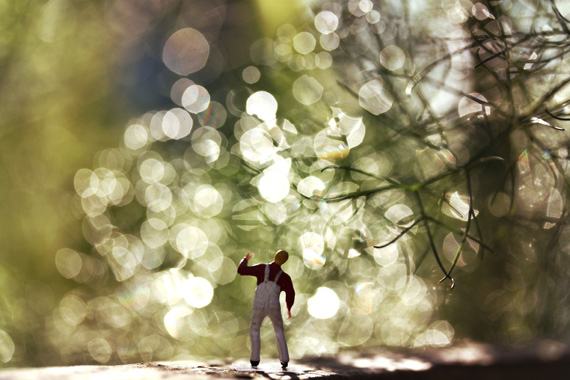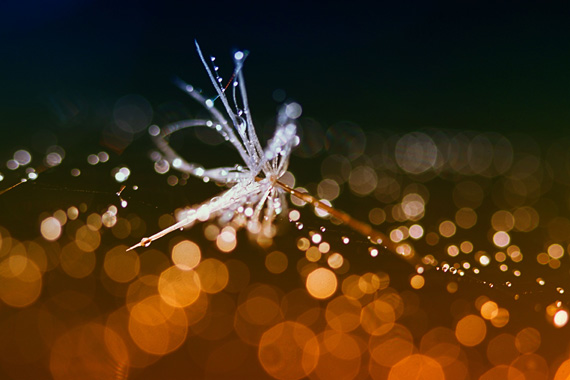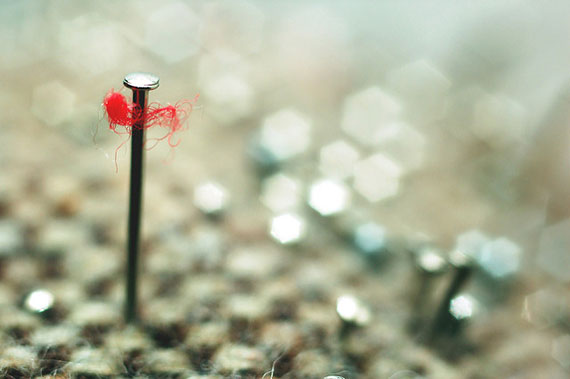In this tutorial, I discuss the technique of isolating the subject matter of your photograph using the focusing technique of bokeh. Bokeh is a Japanese word that roughly translates as the aesthetic quality of the blur. The technique uses depth of field to isolate a subject against a background that is out of focus. The subject matter is in sharp focus thereby emphasizing the subject while hinting at a sense of place without specificity.

“Bokeh-Buffers” captured by Neal Fowler
I often use this technique while photographing outdoors, especially when I want to isolate a flower or plant in an otherwise cluttered environment. Because I want to ‘see’ the subject as the main piece of the photograph, I use any one of several approaches available to me to capture the essence of the subject.
Using Macro Rings
One technique is to extend the placement of the lens relative to the image capture medium using extension tubes. The effect created by extending the lens relative to the ‘film’ is to absolutely isolate the subject against an otherwise blurred background while magnifying the subject to reveal hidden detail. I find using extension tubes and a long lens is ideal for picking up nuanced detail in the interior of flowers, when photographing insects (when they agree to sit still for you) and other subjects where exploded and enlarged detail provides a visual impact that is otherwise missing.

“Dandelion Spiderweb Bokeh” captured by Neal Fowler
When using macro rings, a tripod is an absolute requirement. The front of the lens is place quite close to the subject and your ability to hand hold the camera, focus and shoot is close to impossible. The steady nature of the tripod allows you to do all that is required to make a powerful, engaging image.
Using Depth of Field
Often in the field I shoot with a 28-105mm f/2.8 lens. When choosing to isolate a subject I open the lens up fully and use the longest available focal length. I choose a position that is close to the subject, although I need not be so completely on top of the subject so as to scare away any insect life that might be feeding on the flower. I focus on the subject letting the background fall off into a blurry amalgamation of blended color and a resulting graphic design. Steadying the camera on a tripod is also needed to assure a steady hand.
The difference between the long lens wide open and the extension tubes is one of degree of magnification. With the long lens the subject appears more natural, less magnified if you will. In terms of isolation—the whole purpose of bokeh—there is no significant difference.

Photo by Diego Sevilla Ruiz; ISO 200, f/0.0, 1/60-second exposure.
In terms of impact, either extension tubes or long lens solutions are an interesting way to provide your viewer an experience of isolation of subject matter which, in fact, mirrors what the eye actually sees as we focus on objects close to our eyes. It is my sincere hope that you enjoyed this digital photography tutorial on bokeh.
About the Author:
Roger Passman is an award winning professional photographer located in Northern Illinois. His online store is found at Cool Shots Photography Online Gallery. He often leads creative photo workshops designed for beginning through intermediate amateur photographers.
Go to full article: How to Use Bokeh in Photography to Isolate a Subject
What are your thoughts on this article? Join the discussion on Facebook
PictureCorrect subscribers can also learn more today with our #1 bestseller: The Photography Tutorial eBook
The post How to Use Bokeh in Photography to Isolate a Subject appeared first on PictureCorrect.
from PictureCorrect https://ift.tt/2woUKLf
via IFTTT






0 kommenttia:
Lähetä kommentti